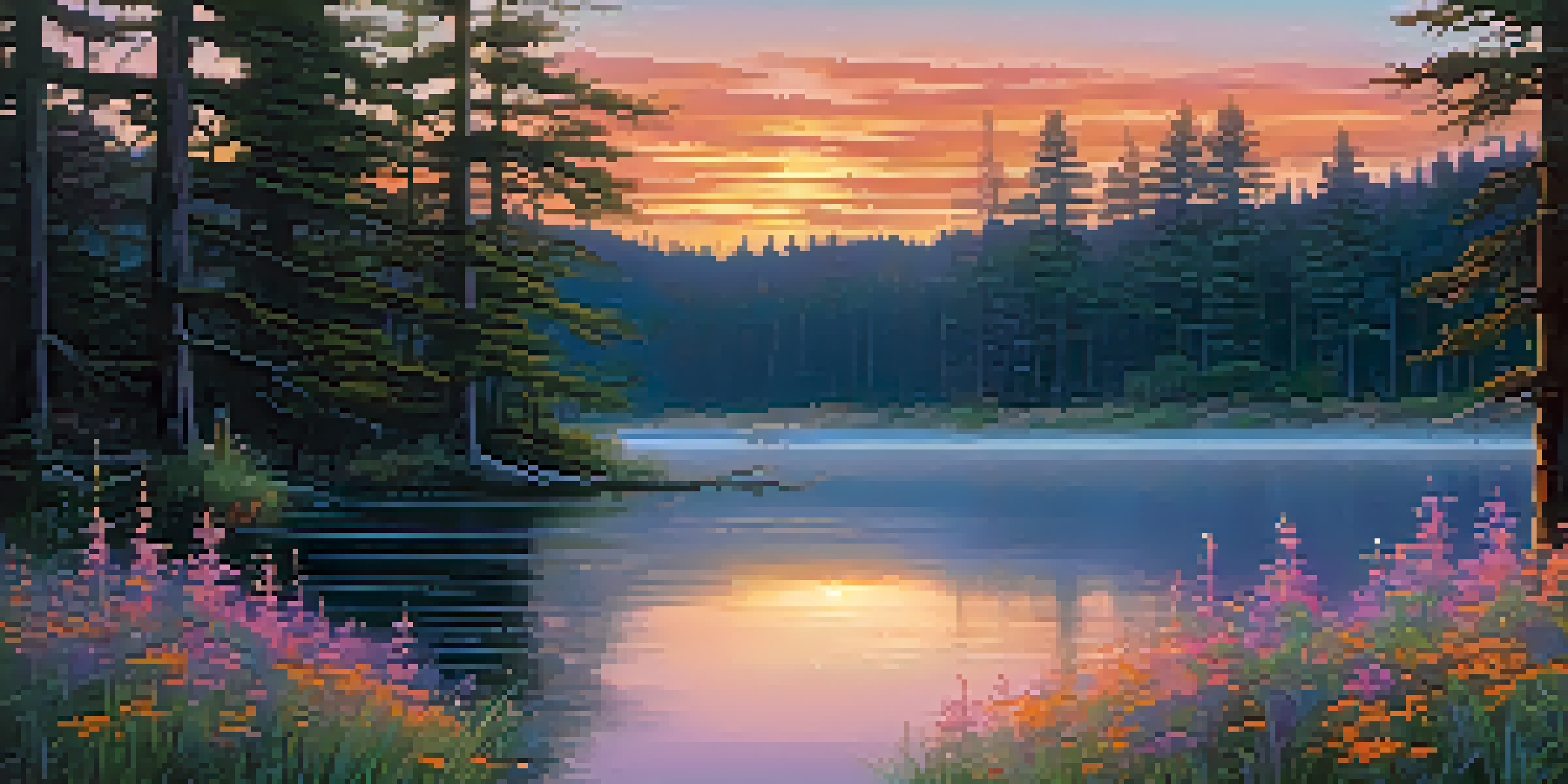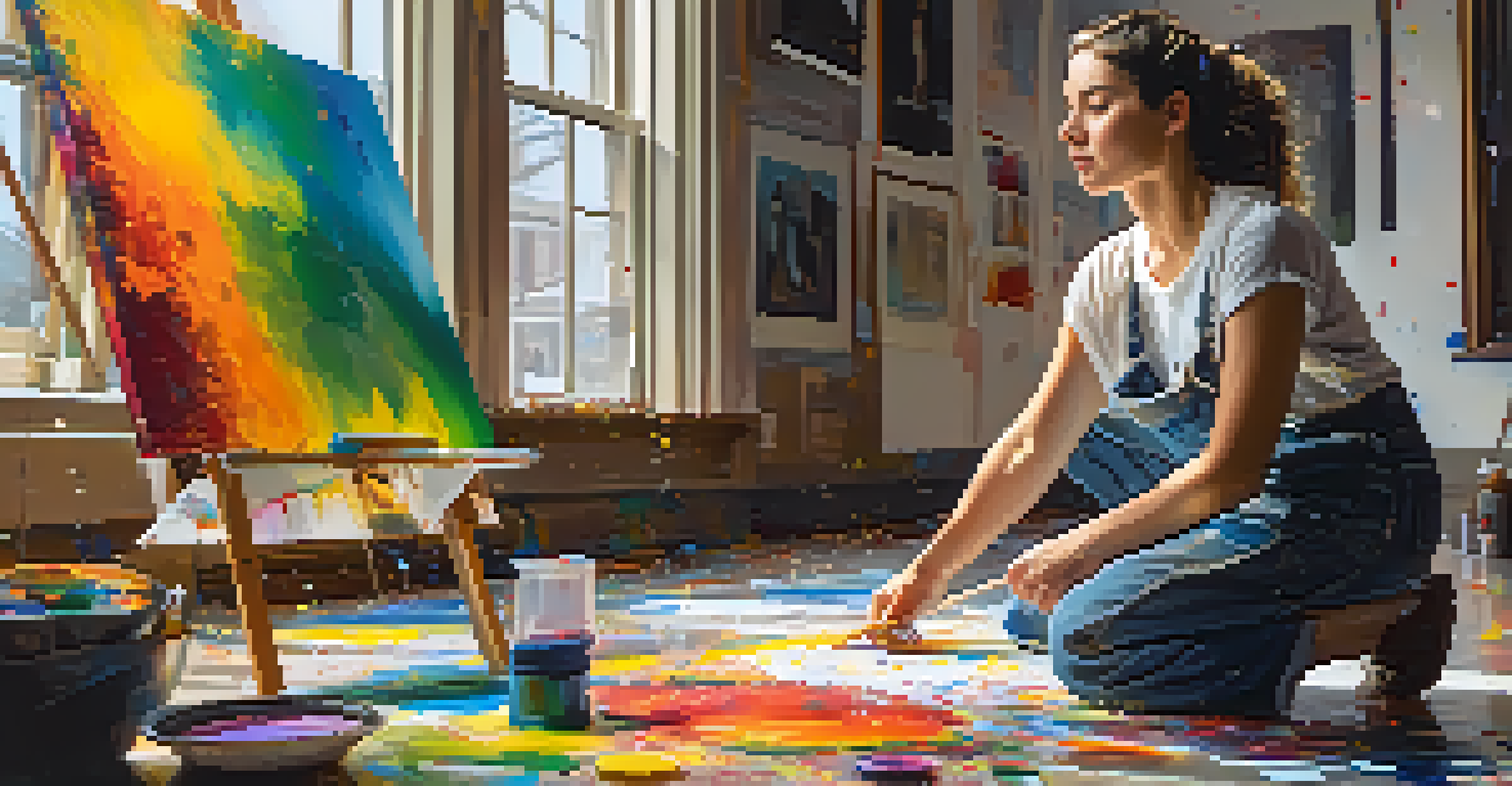Art in Times of Conflict: Painting as a Refuge and Resistance

The Role of Art in Times of Crisis
Art has always played a significant role in human expression, especially during times of conflict. It serves as a mirror reflecting societal struggles, allowing individuals to process emotions and experiences. In chaotic times, painting becomes a vital outlet for both creators and observers, enabling a deeper understanding of the tumultuous world around them.
Art is the most beautiful of all lies.
Artists often channel their frustrations, fears, and hopes into their work, creating pieces that resonate with the public. For instance, during the Spanish Civil War, artists like Pablo Picasso used their paintings to communicate the horrors of war, bringing attention to the plight of innocent lives. This ability to convey complex emotions through visual storytelling makes art an invaluable tool in times of crisis.
Furthermore, art can provoke dialogue and inspire change, appealing to a universal audience. By presenting powerful imagery, artists invite viewers to reflect on their own beliefs and actions, fostering empathy and understanding across divides. In this way, painting not only documents history but also shapes it.
Painting as a Form of Refuge
For many artists, painting provides a sanctuary from the chaos of the outside world. In the midst of conflict, the act of creating art can offer solace and a sense of control over one's surroundings. This refuge allows artists to escape their immediate realities, immersing themselves in the colors, textures, and emotions of their work.

For example, during World War II, artists in hiding created poignant pieces that expressed their fears, hopes, and dreams. These works not only served as a distraction but also as a means of coping with loss and uncertainty. The canvas became a safe haven where they could express their innermost thoughts without fear of judgment or persecution.
Art as a Reflection of Struggle
Art serves as a powerful medium for individuals to process and communicate emotions during times of conflict.
Moreover, painting can foster resilience, encouraging artists to confront their pain rather than suppress it. By transforming trauma into art, they reclaim their narratives and find strength in vulnerability. This transformative process not only aids personal healing but also connects with others who share similar experiences.
Art as a Means of Political Resistance
Throughout history, artists have used their craft to challenge oppressive regimes and draw attention to social injustices. Painting, as a visual medium, can be a powerful form of protest, conveying messages that resonate deeply with audiences. By depicting the struggles and resilience of marginalized communities, artists can inspire collective action and bring about change.
Art must be an integral part of the struggle for peace and justice.
Consider the work of Diego Rivera, whose murals vividly portrayed the struggles of the working class in Mexico. His art not only celebrated their contributions but also critiqued societal inequalities, making his paintings a rallying point for political movements. In similar ways, contemporary artists continue to leverage their talents to shed light on urgent issues, from immigration to climate change.
This use of art as a weapon against oppression illustrates the profound impact creativity can have. While the brush may seem delicate, the messages painted are often anything but. By using their art to resist, artists contribute to a culture of defiance that can inspire entire generations.
Cultural Identity and Artistic Expression
In times of conflict, the exploration of cultural identity through painting becomes even more significant. Artists often grapple with their sense of self, striving to express their heritage and values in a landscape marked by turmoil. By highlighting their cultural narratives, they assert their identities and resist attempts at erasure.
For instance, Indigenous artists frequently use their work to reclaim their histories and traditions, showcasing the beauty and resilience of their cultures. Through vibrant colors and traditional symbols, they convey stories that challenge dominant narratives and advocate for recognition and respect. This act of representation is crucial in fostering a sense of belonging amidst chaos.
Painting Offers Healing and Refuge
Creating art provides solace and a sense of control for artists, helping them cope with trauma and uncertainty.
Additionally, the sharing of cultural stories through art can bridge divides, uniting people from different backgrounds. By celebrating diverse experiences, painting fosters understanding and acceptance, creating a shared space for dialogue and healing in conflict-ridden societies.
The Healing Power of Art in Conflict
Art has a unique ability to heal wounds that words often cannot touch. In the aftermath of conflict, painting can serve as a therapeutic outlet for both artists and communities. By expressing their pain and resilience through art, individuals can begin to process their experiences and move towards healing.
Community art projects, for example, often emerge in the wake of violence, bringing people together to create shared expressions of hope and recovery. These collective efforts foster a sense of belonging and solidarity, reminding participants that they are not alone in their struggles. The act of creating together can be profoundly restorative.
Moreover, exhibitions showcasing artworks from conflict zones can raise awareness and spark conversations about healing and reconciliation. By sharing these stories through visual art, communities can engage in a broader dialogue about the impact of conflict and the importance of finding peace.
Global Perspectives on Conflict Art
Art in times of conflict is not limited to a specific region or culture; it is a universal phenomenon. Across the globe, artists have used their talents to respond to wars, revolutions, and societal upheavals. The power of painting to convey human experiences transcends borders, creating a shared narrative of resilience and resistance.
From the haunting images of Edvard Munch during the tumultuous early 20th century to the contemporary works of Syrian artists reflecting on their homeland's strife, the global perspective on conflict art is rich and diverse. Each artist brings their unique voice, contributing to a tapestry of human experience that resonates with audiences worldwide.
Art as a Tool for Political Resistance
Artists use their craft to challenge oppression and highlight social injustices, inspiring collective action for change.
These global narratives remind us that art can serve as a unifying force, connecting individuals through shared experiences of pain, hope, and resistance. By embracing the diverse expressions of conflict art, we can foster empathy and understanding in a world often divided by differences.
Conclusion: The Enduring Legacy of Conflict Art
As we reflect on the role of painting in times of conflict, it becomes clear that art is more than just a form of expression; it is a lifeline. Through the act of creation, artists provide a voice to those who are often silenced, documenting the human experience in all its complexities. The legacies of their works continue to inspire future generations to confront injustice and seek healing.
Moreover, the power of art to evoke emotion and provoke thought ensures that these stories will not be forgotten. Whether through paintings that depict sorrow or those that celebrate resilience, each piece contributes to a greater understanding of the human condition. As viewers, we are invited to engage with these narratives and reflect on our own roles in shaping a more just world.

In the end, art in times of conflict serves as a testament to the indomitable spirit of humanity. It reminds us that even in the darkest of times, creativity can illuminate paths toward healing, understanding, and resistance. Through painting, we find not only refuge but also the courage to challenge the status quo and envision a brighter future.